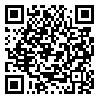Volume 4, Issue 4 (10-2000)
IBJ 2000, 4(4): 113-116 |
Back to browse issues page
Download citation:
BibTeX | RIS | EndNote | Medlars | ProCite | Reference Manager | RefWorks
Send citation to:



BibTeX | RIS | EndNote | Medlars | ProCite | Reference Manager | RefWorks
Send citation to:
Khosravi A D, Stanford J L. Differentiation of M. scrofulaceum from Related Mycobacterial Species by Double-Diffusion Technique. IBJ 2000; 4 (4) :113-116
URL: http://ibj.pasteur.ac.ir/article-1-590-en.html
URL: http://ibj.pasteur.ac.ir/article-1-590-en.html
Abstract:
Isolation and differentiation of various species of mycobacteria are predominantly based on conventional, cultural and biochemical tests. Among the non-tuberculous mycobacteria, these tests are unable to differentiate M. scrofulaceum from M. avium-intracellulare (MAI) because of their identical biochemical characteristics. For this reason, one hundred mycobacterial strains suspected to be M. scrofulaceum, which had identical preliminary cultural and biochemical tests, were investigated by immunodiffusion technique. The standard sonicated antigens of M. scrofulaceum (22, 159, 1281) were used to sensitize rabbits and to produce specific antisera. The method was performed in plastic petri dishes containing agar and sodium azide. Antiserum was placed in the central well of the agar plate and the homologous ultrasonicates were in the peripheral wells. The results were observed one week later and the mycobacterial strains were divided according to the number of produced precipitation lines. Four different groups were identified on the basis of identical reaction with three antisera (three groups were M. scrofulaceum). Group 1 produced identical precipitation lines with antisera 22 and 1281, group 2 with antisera 22, 159 and 1281 and group 3 with antiserum 1281. The present study showed that the technique was able to differentiate M. scrofulaceum from MAI and was also able to identify the bacterium as distinct species. Moreover, by using different specific antisera, it is possible to determine different serotypes of M. scrofulaceum.
Type of Study: Full Length/Original Article |
Send email to the article author
| Rights and permissions | |
 |
This work is licensed under a Creative Commons Attribution-NonCommercial 4.0 International License. |








.png)
